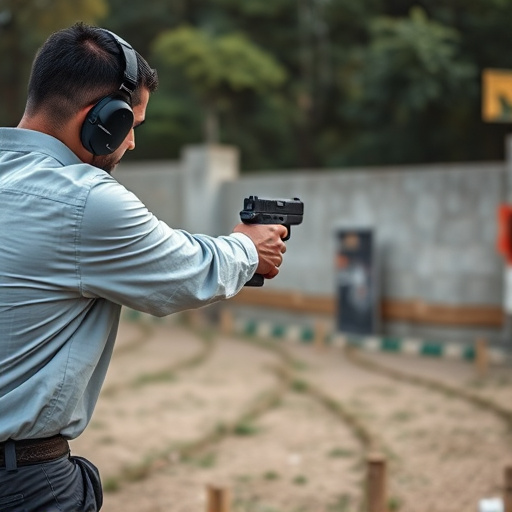Disguised stun guns, designed to look like everyday items, utilize electrical current pulses to temporarily paralyze attackers, offering a powerful and discreet self-defense mechanism. These devices emit controlled shocks through electrodes, disrupting muscle function at contact points for effective immobilization without severe harm. Understanding the current flow-stun device performance relationship is crucial for anyone considering these innovative self-defense tools.
In today’s world, concealed carry permit holders are seeking effective yet discreet self-defense options, making disguised stun guns a popular choice. These compact devices utilize electrical current flow as their primary mechanism for immobilizing attackers. Understanding how this technology works is crucial when considering them as personal protection tools. This article explores the role of electrical current in stun devices, with a focus on how disguised stun guns leverage current to provide swift and effective self-defense solutions.
- Understanding Electrical Current and Its Role in Stun Devices
- How Disguised Stun Guns Utilize Current Flow for Self-Defense
Understanding Electrical Current and Its Role in Stun Devices

Electrical current is the lifeblood of stun devices, such as disguised stun guns, serving as the driving force behind their effectiveness as self-defense tools. The flow of electrons creates a sudden and intense impulse that disrupts the normal functioning of a person’s muscular system, temporarily incapacitating them. This interruption is what makes stun devices a powerful deterrent and an essential tool for personal safety.
The role of electrical current in stun guns goes beyond simply causing shock. It involves carefully controlled pulses delivered through electrodes, which can vary in intensity and duration. These factors determine the device’s effectiveness, ensuring it delivers enough force to immobilize an assailant without causing severe or permanent harm. Understanding this relationship between current flow and stun device performance is crucial for anyone considering a disguised stun gun as a means of self-defense.
How Disguised Stun Guns Utilize Current Flow for Self-Defense

Disguised stun guns, often cleverly designed to look like everyday items like flashlights or pens, leverage electrical current flow as their primary self-defense mechanism. These tools emit a powerful electric shock when activated, temporarily paralyzing an attacker and providing the user with crucial time to escape or seek help. The current flows through the device’s electrodes, which are typically located at points of contact with the target, delivering a sudden jolt that disrupts muscle control in the affected area. This innovative use of electrical current flow makes disguised stun guns effective self-defense tools for individuals seeking to deter potential threats discreetly and efficiently.
Disguised stun guns, as innovative self-defense tools, harness the power of electrical current flow to deliver a powerful shock. By understanding how this technology works, individuals can make informed choices about personal safety. These devices provide an effective means of deterring potential attackers, offering users a sense of security and empowerment. When utilized responsibly, disguised stun guns can be valuable assets in situations requiring immediate protection, ensuring folks are equipped to navigate dangerous scenarios with enhanced confidence.
